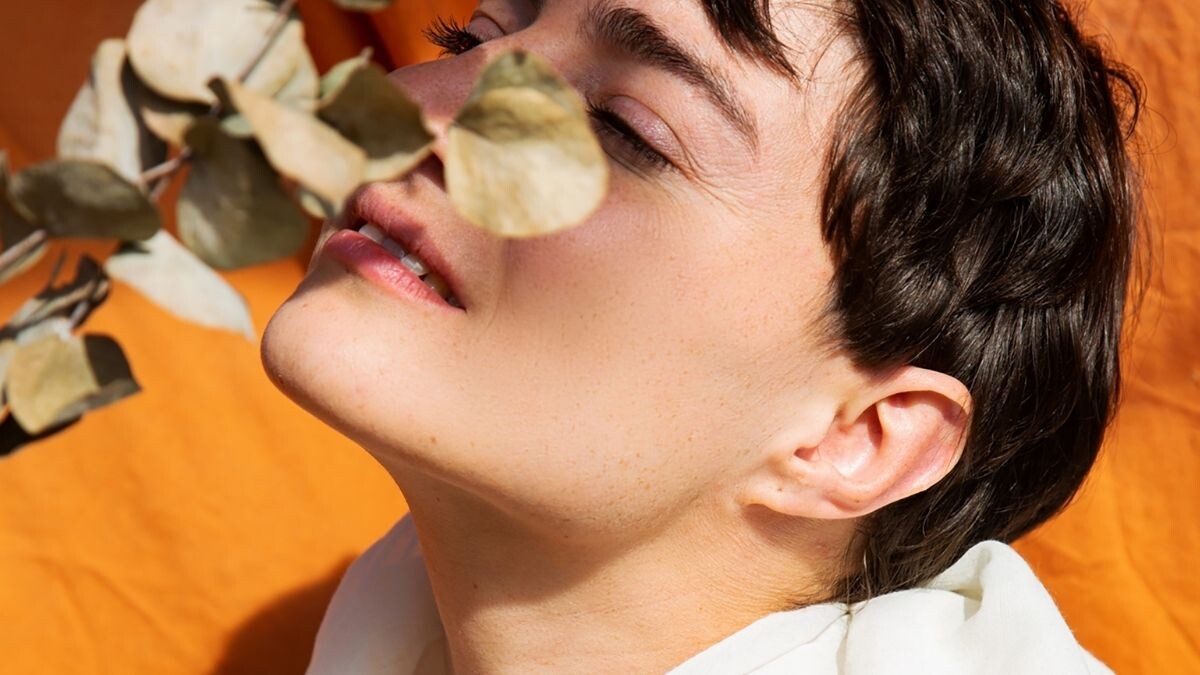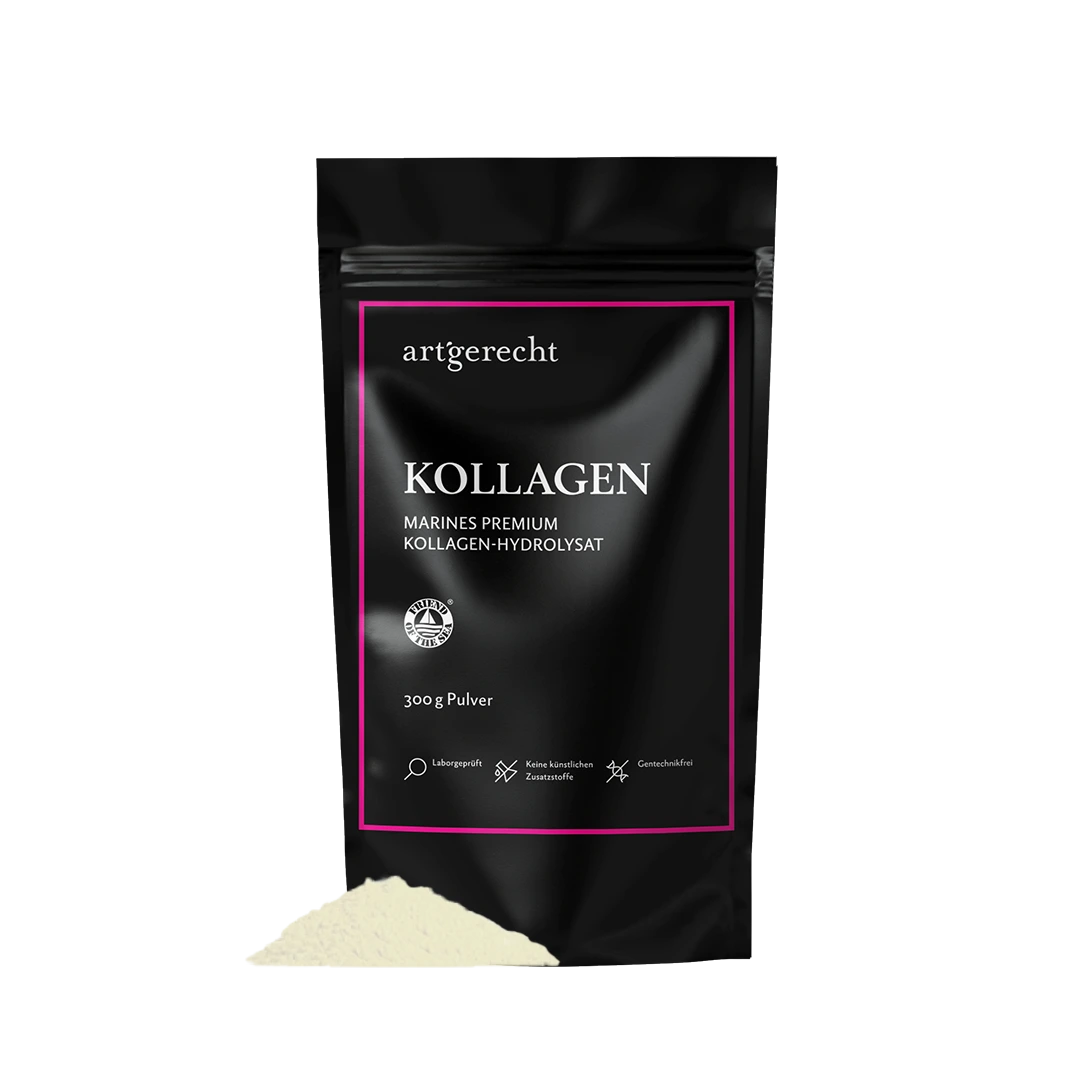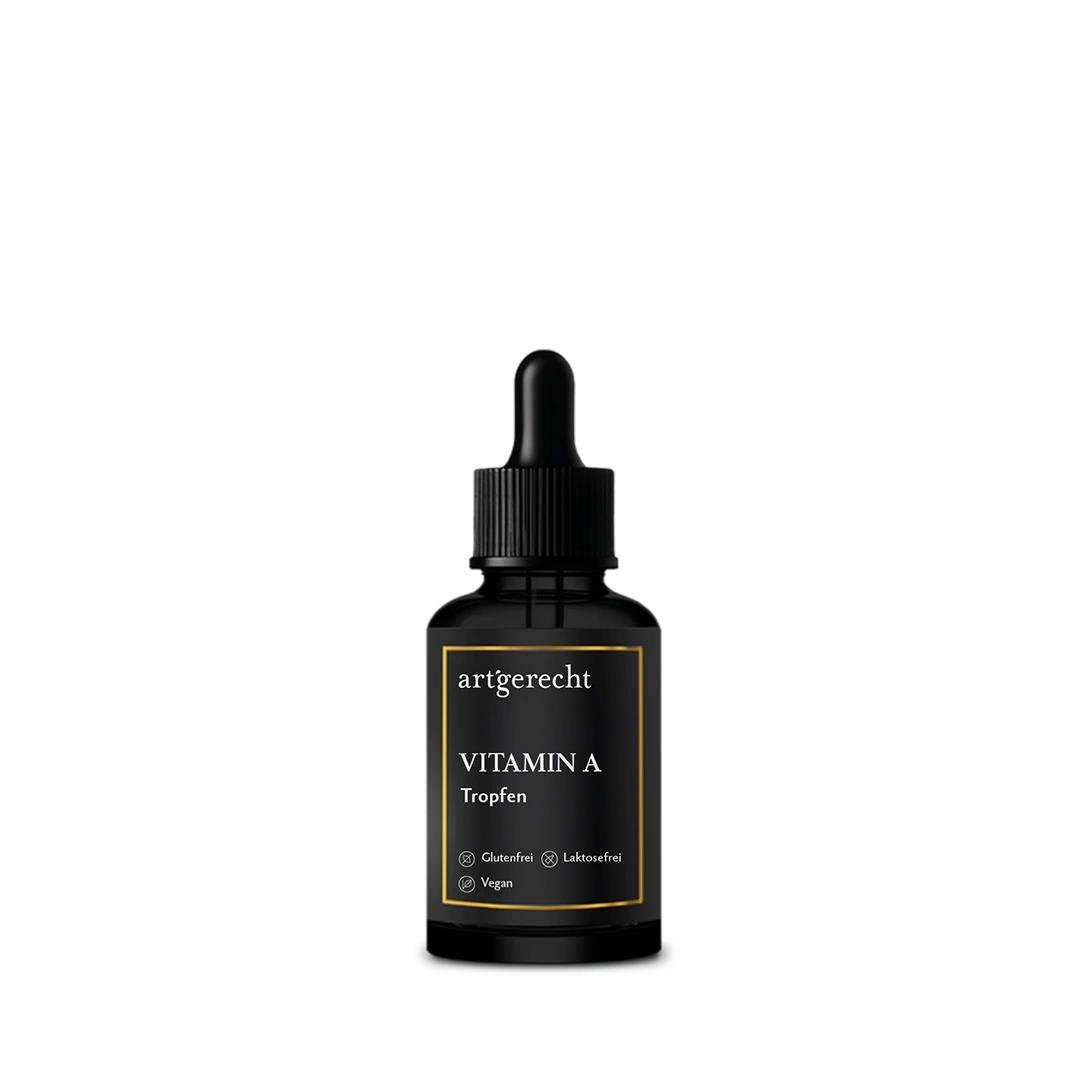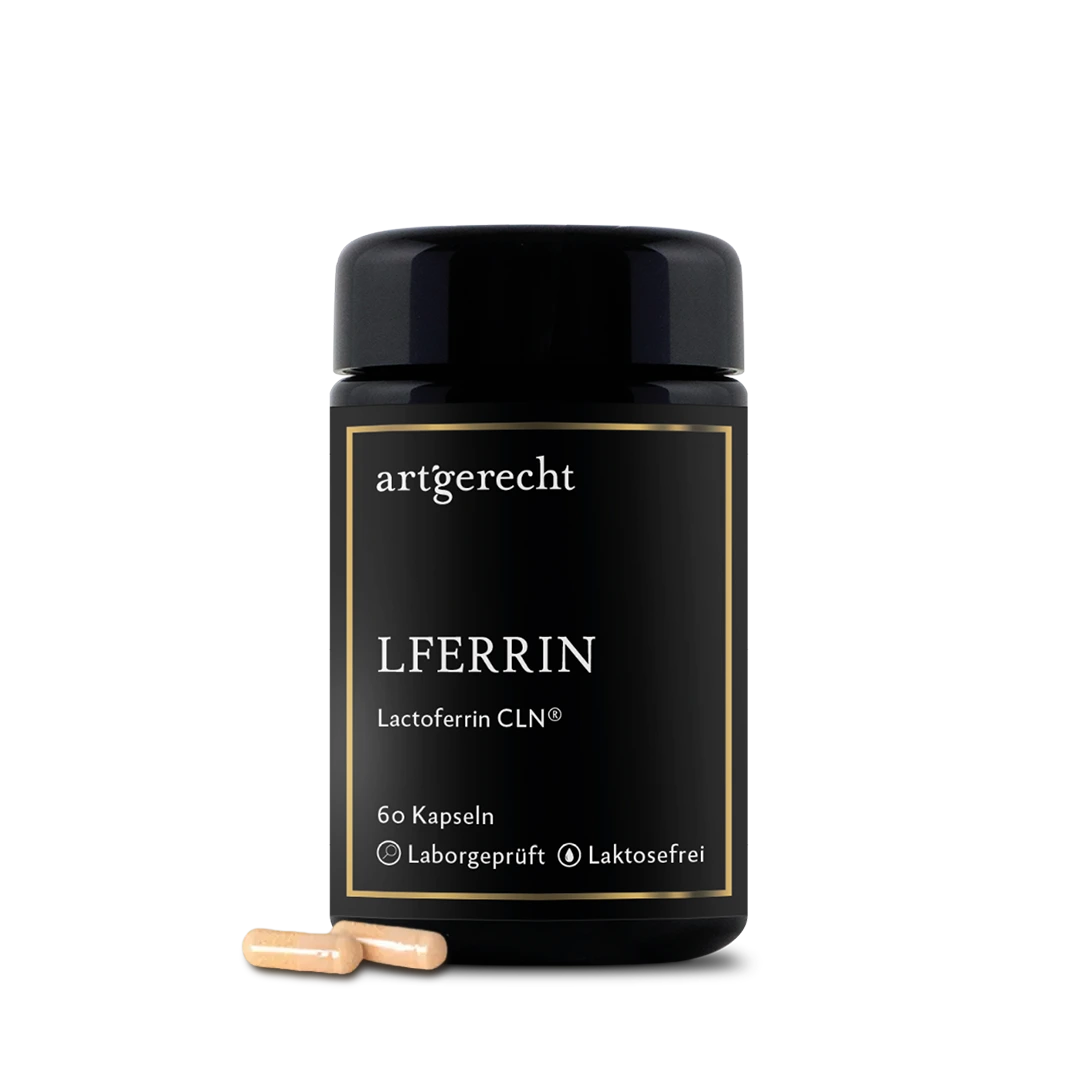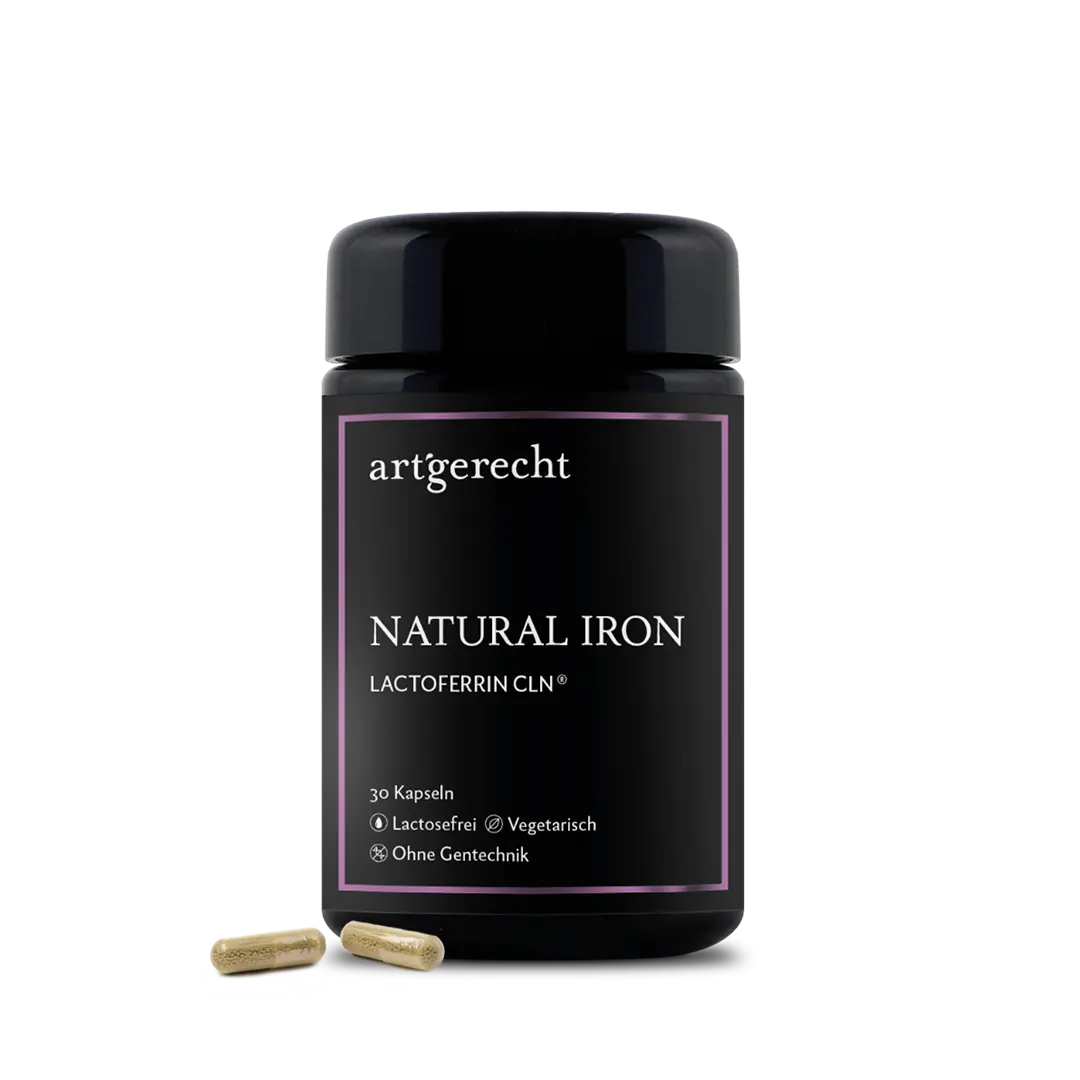- How does the female cycle work?
- What happens in the individual cycle phases?
- In short:
- The woman's egg cells
- All or nothing
- What are the tasks of Östrogen and progesterone?
- The period as a mirror of health
- When the cycle gets out of rhythm: Menstrual disorders
- Herbs to strengthen women's health
- Basic instructions tea:
- Conclusion:
- Recipe tip:
-
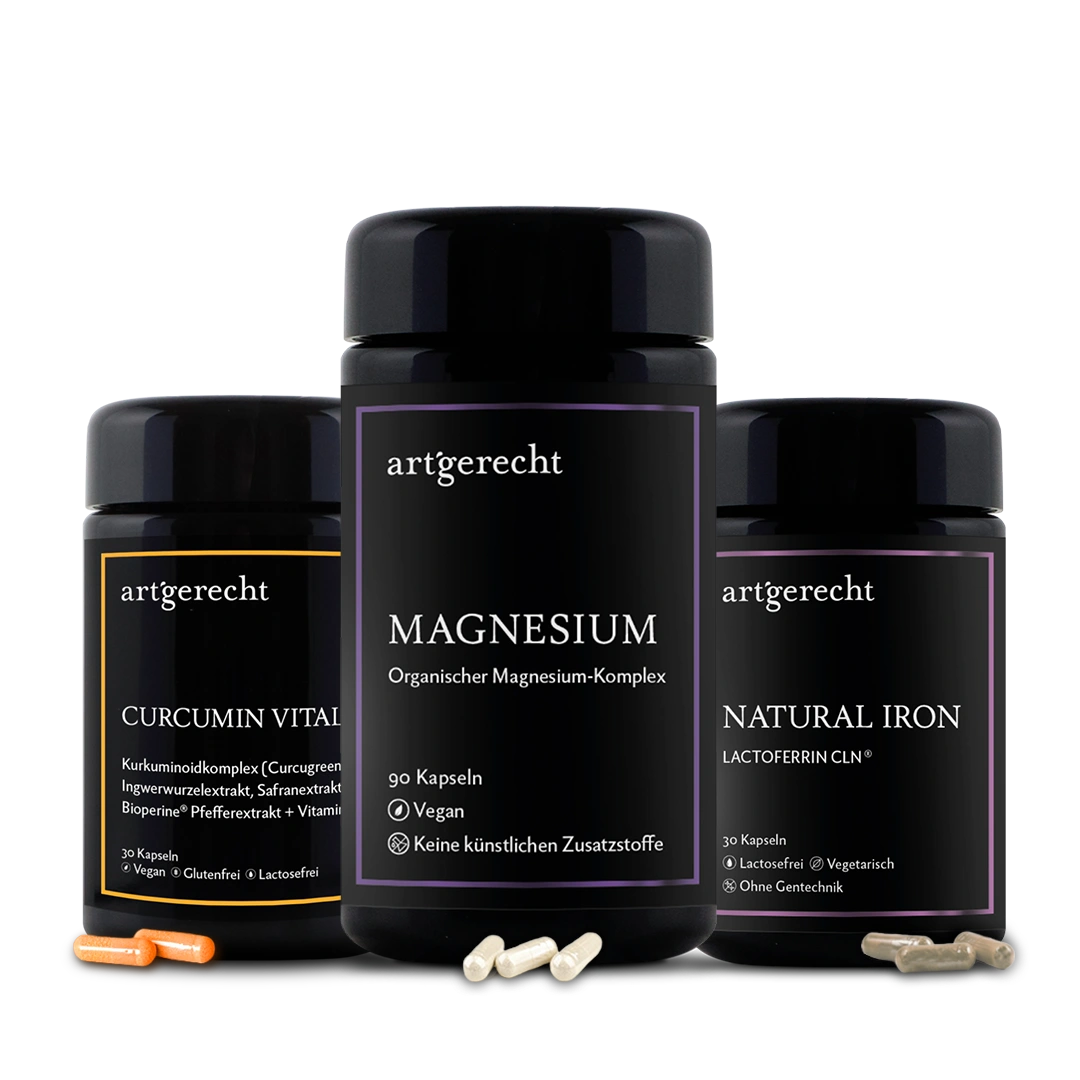 €79.90
€79.90
Every month, the woman's body prepares itself anew: Will this cycle be the time? Will fertilization take place? If the answer is no, menstruation starts two weeks later. From an evolutionary point of view, the female cycle serves fertility and reproduction in order to produce offspring and preserve the species. Logical, you would think. Menstruation is often a taboo subject, yet it affects every woman for decades.
How does the female cycle work?
The female cycle has its always recurring cycles. It starts on the first day of the period and ends on the day before the next period. This period is referred to as a cycle. The „pattern cycle“ lasts 28 days. This has different phases: The duration of each phase can be individual in length and varies from woman to woman. This means that 23 days to 35 days are considered completely normal. A woman can also have different cycle lengths over the course of her life.
What happens in the individual cycle phases?
- Proliferative phase: The first phase in the female cycle
- The ovulation phase in the middle of the female cycle‘
- The luteal phase: Development of the corpus luteum
- Onset of menstruation
The sequence is always the same: various hormones (messenger substances as signals) are released, which are regulated by the brain and fulfill very specific tasks within the cycle. The information reaches our ovaries via signals (hormones). At the start of a new cycle, the brain sends a growth hormone via the hypothalamus as a higher-level instance. This is passed on to the pituitary gland, i.e. the hormone-producing gland: A hormone release occurs. At the beginning, the so-called follicle-stimulating hormone (FSH for short) is released. The hormone FSH (as the name suggests) stimulates the maturation of the egg in the ovary.
The growing egg produces more and more Östrogen, which is released into the bloodstream. Östrogen is one of the sex hormones. The more Östrogen is produced and circulates in the bloodstream, the faster the brain receives the information via these messenger substances: All clear, we are ready! Oestrogens formed in the ovary then ensure that the uterine lining is newly formed.Now there is another hormone: The luteinizing hormone (LH for short, also known as luteotropin). LH is produced in the front lobe of the pituitary gland (hypophysis). This is under the control of the hypothalamus in the diencephalon, but also reacts to the sex hormones present in the blood. This creates a control loop. In women of reproductive age, LH controls the menstrual cycle together with other control hormones. Its special feature is that it triggers ovulation in the ovary. After ovulation, LH also promotes the development of the corpus luteum from the remaining egg, the follicle. It then stimulates the corpus luteum to produce significantly more progesterone, causing its blood serum level to rise temporarily. In addition, LH supports the formation of Östrogens. The female sex hormones belong to two directions: the Östrogens (mainly Östradiol) and gestagens or progesterone.
.The luteinizing hormone is also found in men, where it is called ICSH (interstitial cell-stimulating hormone). ICSH stimulates the growth of Leydig cells in the testicles. These produce male sex hormones (androgens, particularly testosterone)
.In short:
With increasing LH levels, ovulation is triggered – and the egg is released into the fallopian tube. This is the time when the woman is fertile. Ovulation usually takes place in the middle of the woman's cycle, and that is 10 to 14 days before the next menstrual period. In the case of an extended cycle of 30 days, for example, it is delayed slightly and occurs between the 16th and 20th day of the cycle. After ovulation, the egg is only capable of fertilization for a very short time: The time window is 12 to 24 hours. During this time, the egg cell migrates towards the uterus and can be fertilized by sperm. In order for the sperm to reach the egg, the cervix opens slightly during this phase. This is the pattern cycle, which is the same for every woman in this sequence.
The woman's egg cells
Every woman's egg cells that are produced during her lifetime are already present at the time of birth. The egg cells are therefore already formed during pregnancy and then „only grow“ in the individual cycles. If one of the eggs has grown large enough during the cycle, it can be released into the fallopian tube as an egg during ovulation.
All or nothing
Yes. Fertilization has taken place and the progesterone level is maintained. The fertilized egg cell migrates to the uterus and implants there. Progesterone is therefore also known as the pregnancy-preserving hormone: it makes it comfortable for the egg cell in the uterine lining so that it can mature and develop properly.
No. The egg has not been fertilized and the body has to prepare the female reproductive organs for a new cycle: Within the next ten days, the corpus luteum regresses and no more progesterone is produced. The sex hormones drop and the period is stopped. The mucous membrane that was built up is broken down again. The immune system becomes active. This is because the degraded cells are eaten up by immune cells and the rest is excreted as menstruation.
What are the tasks of Östrogen and progesterone?
Östrogen, which is increasingly produced by the growing egg cell in the first phase, ensures that we are more willing to have sex. During this time, we are more creative, more open and more active. Because evolution is about the egg being fertilized. At the time when we are fertile, we really do look more attractive to men.
The second half of the cycle is all about retreat and rest. The fertilized egg should now be able to implant optimally in the uterus. Progesterone is responsible for this „internal contraction“.
These two hormones therefore significantly influence our mood. They are also referred to as the attractiveness and alertness phase.
The period as a mirror of health
With this understanding, it is now also clear that the cycle serves us women as a mirror for our state of health. And invites us month after month to listen deeper into ourselves:
- Do I have a functioning cycle and regular periods?
- How do I feel during them?
For a functioning cycle, our systems in the body need to work well together. This includes our nervous, hormonal and immune systems,
among others.If there are disruptions in one of the systems, this can affect the entire cycle.
When the cycle gets out of rhythm: Menstrual disorders
The female sex hormones often influence our lives more than we (and also „men“) would like. So the symptoms mentioned above may be a normality, which for most women is part of being a woman.
Mood swings, PMS (premenstrual syndrome, also known as „Prepare to Meet Satan“), water retention, breast tenderness, regular pain, seemingly unexplained hunger, unfulfilled desire to have children or libido loss – the list of symptoms is long. Also cycle irregularities such as heavy bleeding (hypermenorrhea), light bleeding (hypomenorrhea), frequent bleeding (polymenorrhea), infrequent bleeding (oligomenorrhea), prolonged bleeding (menorrhagia) and absence of bleeding (amenorrhea) are among the most common symptoms.
In this context, the term „„„strogen dominance” is increasingly being mentioned as a cause.
Herbs to strengthen women's health
| Beifuß |
| Relaxes and calms nervous conditions;nden |
| Promotes blood circulation |
| Ferruginous herb |
| Relaxing, analgesic and relaxing. Helps with diarrhea and is said to relieve pain during heavy menstruation |
| For nervous conditions and headaches, vervain can relax |
| Womens mantle |
| As the name suggests, this plant is used in gynecology. It is said to regulate the menstrual cycle and help with PMS, mood swings, menstrual and menopausal symptoms |
| It is also used for mild diarrhea |
| It is said to help with the desire to have children |
| Raspberry leaves |
| Affect the muscles of the uterus and pelvis in a relaxing way |
| .auml;rmutter and pelvis |
| John's wort |
| Mood-enhancing and relaxing |
| L¨wenzahnblätter |
| Cramp relief in case of vains, bloating |
| Stimulates the secretion of gastric juice |
| Melissa |
| Also known as women's herb as it can have a cramping effect on menstrual pain |
| For digestive complaints such as bloating and flatulence, soothes the intestinal muscles |
| Mönchspfeffer |
| Supposed to regulate the menstrual cycle;and help with hormone-related complaints such as PMS with headaches, breast tenderness, depression and irritability |
| Sheep's sheaf |
| Stimulates bile secretion and thus has a cramp-relieving effect on the digestive system |
| Silver primrose |
| The root of black cohosh is used for menopausal and menstrual complaints, as it has analgesic, antispasmodic and anti-inflammatory properties.antispasmodic and anti-inflammatory |
| Cinnamon |
| Has an antibacterial effect, promotes blood circulation, relaxes and lowers blood sugar levels. |
Basic instructions tea:
Boil the water, wait briefly so that it is no longer boiling hot. Pour the hot water over the herbs and cover with a lid, as otherwise the herbs will turn yellow. Leave to infuse for approx. 10 minutes.
Conclusion:
Once we learn to understand the period as a mirror of our health, we can learn a lot about our body and make a major contribution to our well-being.
Recipe tip:
Passende Produkte
-
 €79.90
€79.90
Kürzlich hinzugefügte Beiträge
-
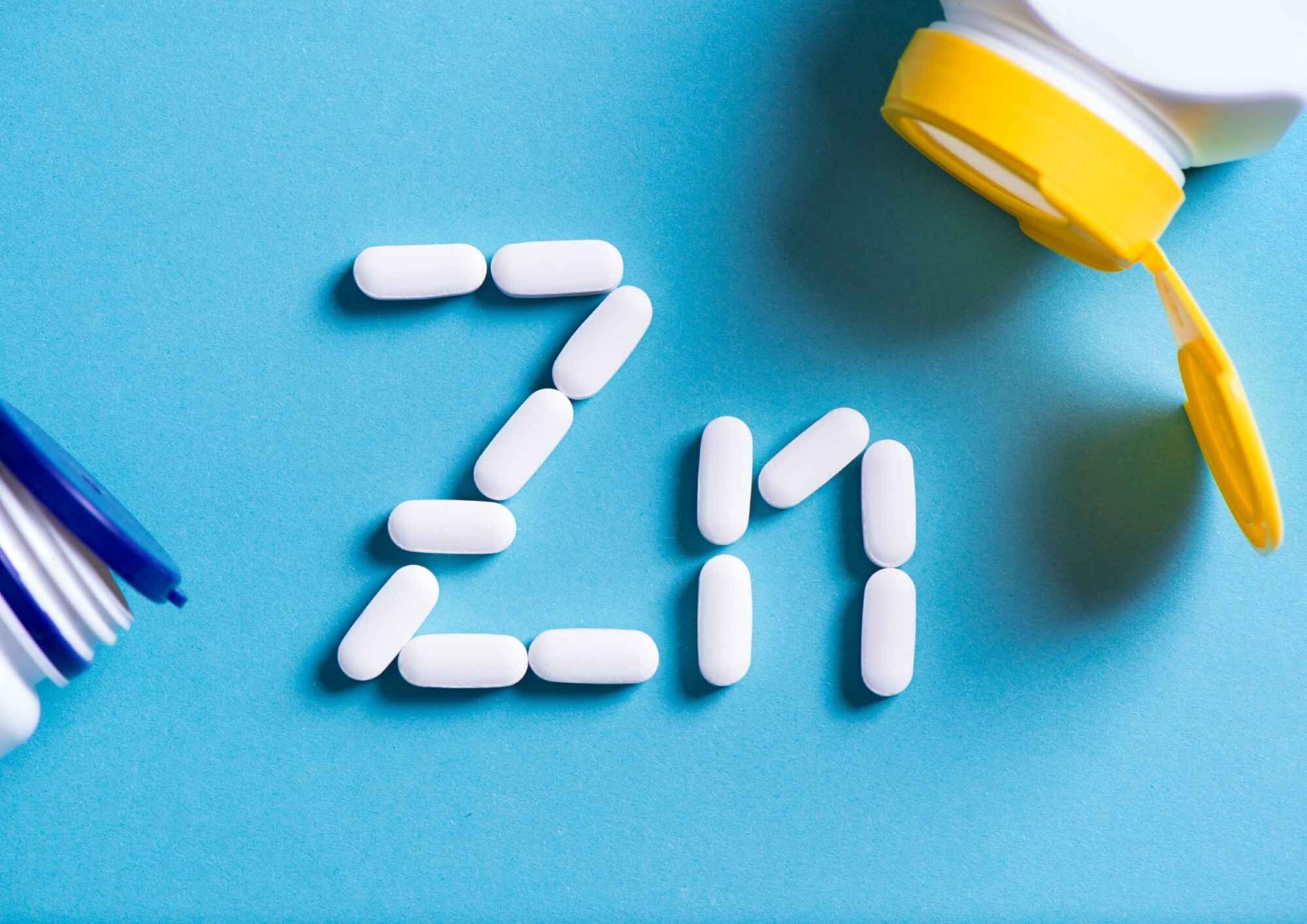 Zink reduziert nachweislich die Krankheitsdauer – Was sagt die Wissenschaft?Zink kann mehr als nur das Immunsystem stärken. Studien zeigen, dass es die Dauer von Erkältungen spürbar verkürzen kann.
Zink reduziert nachweislich die Krankheitsdauer – Was sagt die Wissenschaft?Zink kann mehr als nur das Immunsystem stärken. Studien zeigen, dass es die Dauer von Erkältungen spürbar verkürzen kann. -
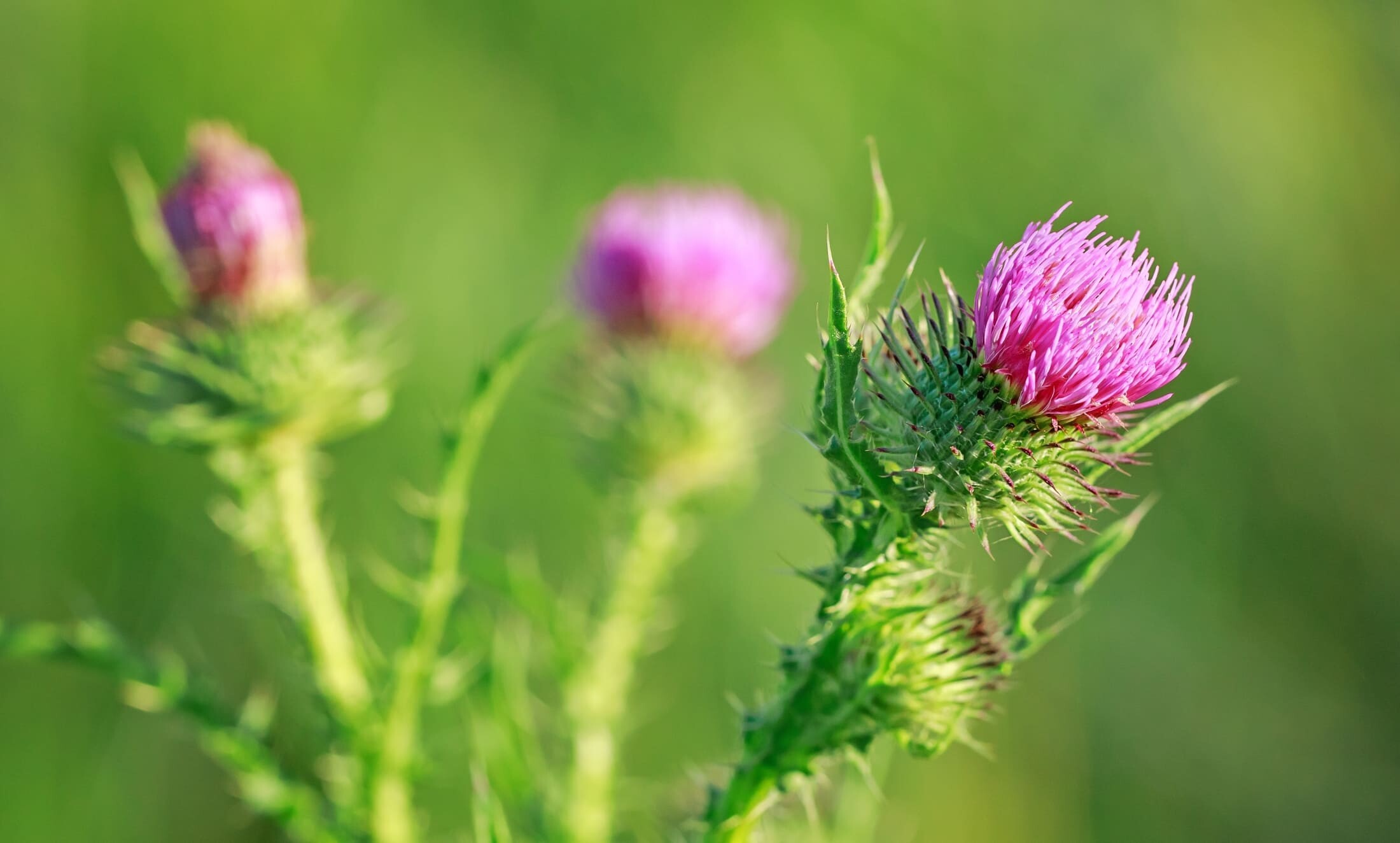 Milk thistle: effect on liver health and detoxificationHow does milk thistle really protect our liver? Find out how silymarin neutralizes free radicals, supports detoxification and what studies say about its effect on fatty liver, hepatitis & co. Find out more now!
Milk thistle: effect on liver health and detoxificationHow does milk thistle really protect our liver? Find out how silymarin neutralizes free radicals, supports detoxification and what studies say about its effect on fatty liver, hepatitis & co. Find out more now! -
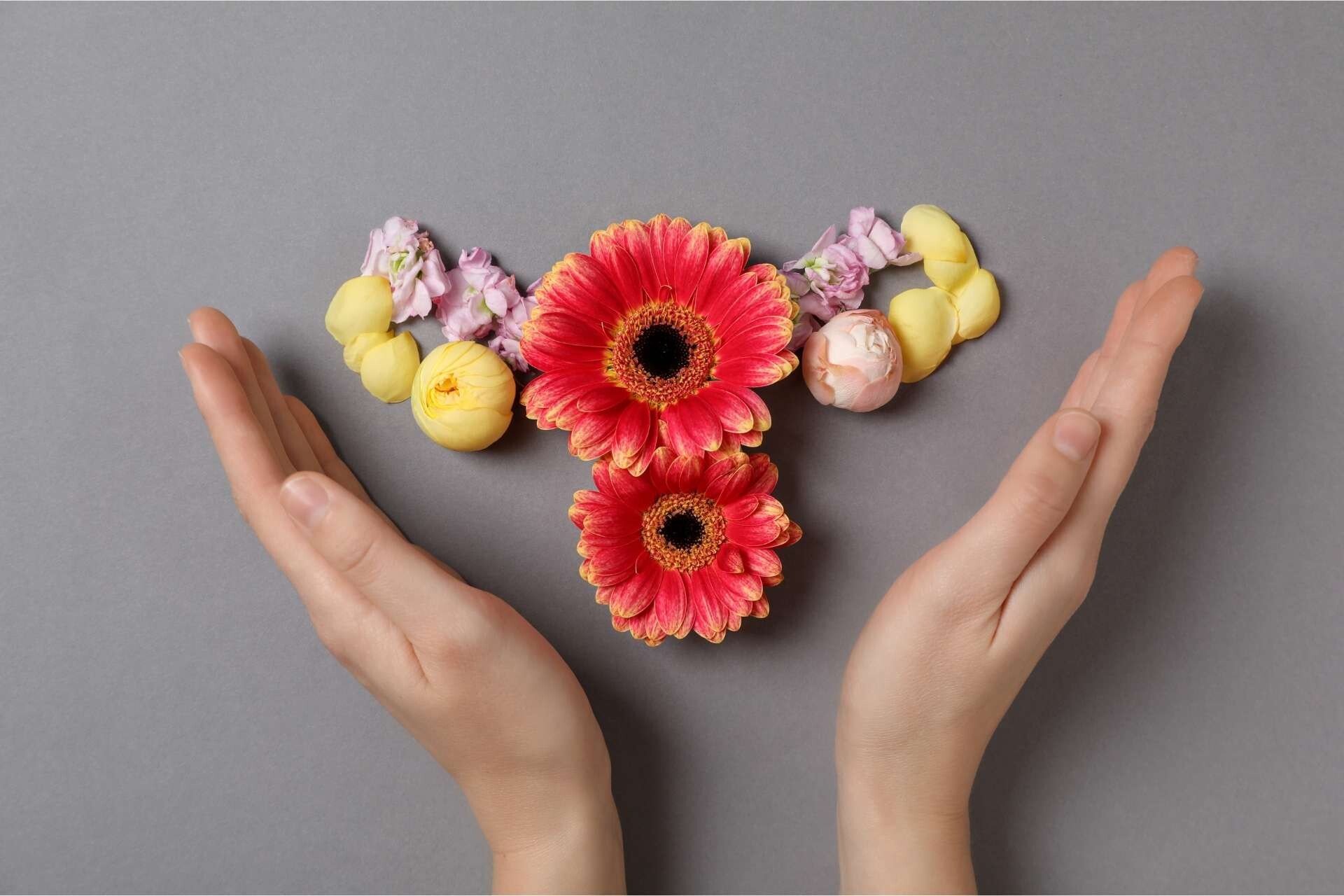 Menopause is not a disease: everything women (and men) should knowHalf of humanity is affected by the menopause. The PRO issue of Health Nerds is all about facts, myths and tips about the menopause.
Menopause is not a disease: everything women (and men) should knowHalf of humanity is affected by the menopause. The PRO issue of Health Nerds is all about facts, myths and tips about the menopause. -
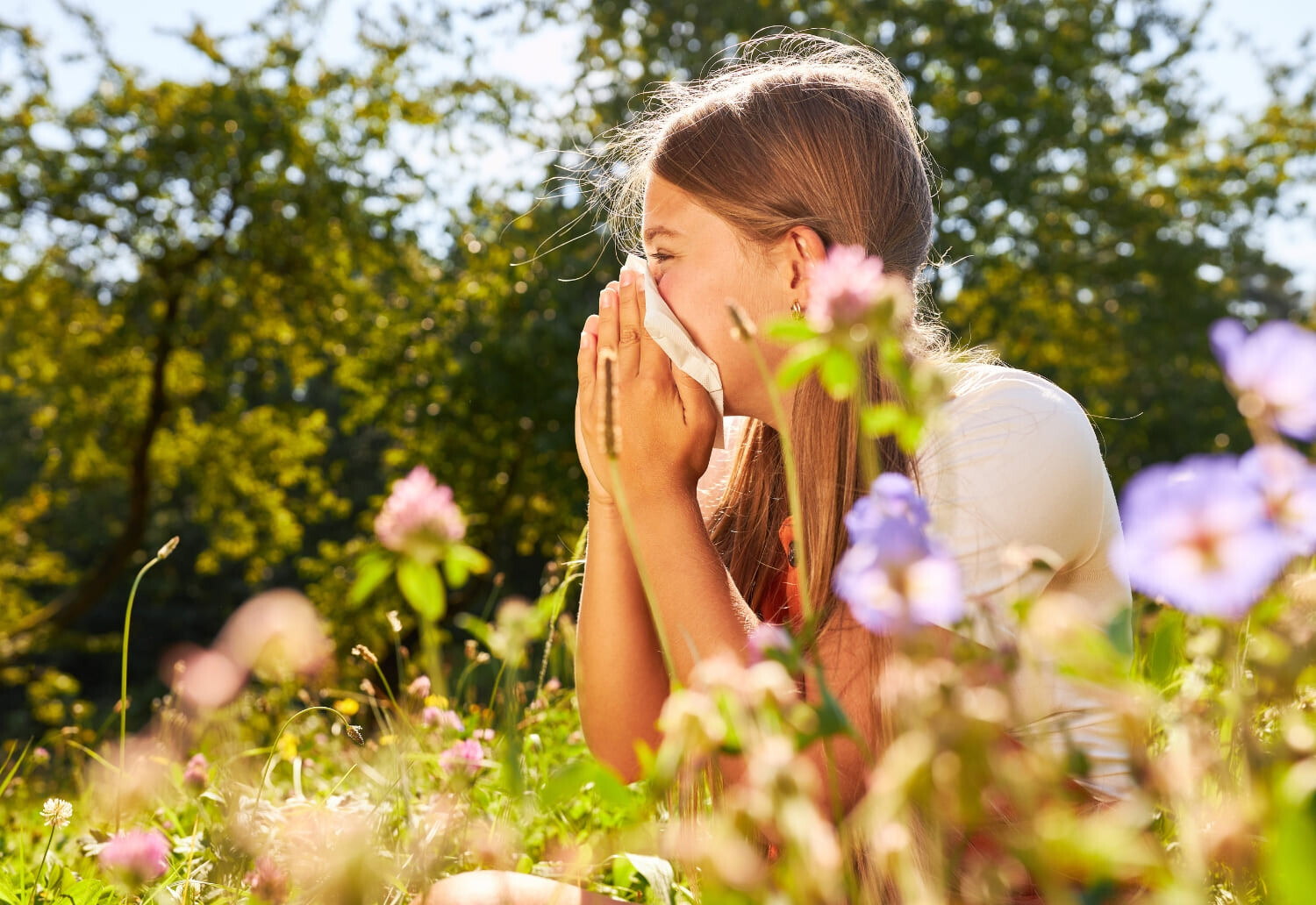 Allergien und Heuschnupfen – Häufigkeit, Ursachen, Behandlung und PräventionOb Gräser, Pollen oder Hausstaub – Allergien betreffen immer mehr Menschen. Erfahre, warum sie entstehen, welche Therapien helfen und wie Du mit gezielter Vorbeugung die Beschwerden bei Dir oder Deinem Kind langfristig lindern kannst.
Allergien und Heuschnupfen – Häufigkeit, Ursachen, Behandlung und PräventionOb Gräser, Pollen oder Hausstaub – Allergien betreffen immer mehr Menschen. Erfahre, warum sie entstehen, welche Therapien helfen und wie Du mit gezielter Vorbeugung die Beschwerden bei Dir oder Deinem Kind langfristig lindern kannst. -
 Alcohol - health elixir or underestimated risk?There is a persistent rumor that alcohol in moderation can be good for your health. There are even research studies that prove this. But are they true?
Alcohol - health elixir or underestimated risk?There is a persistent rumor that alcohol in moderation can be good for your health. There are even research studies that prove this. But are they true? -
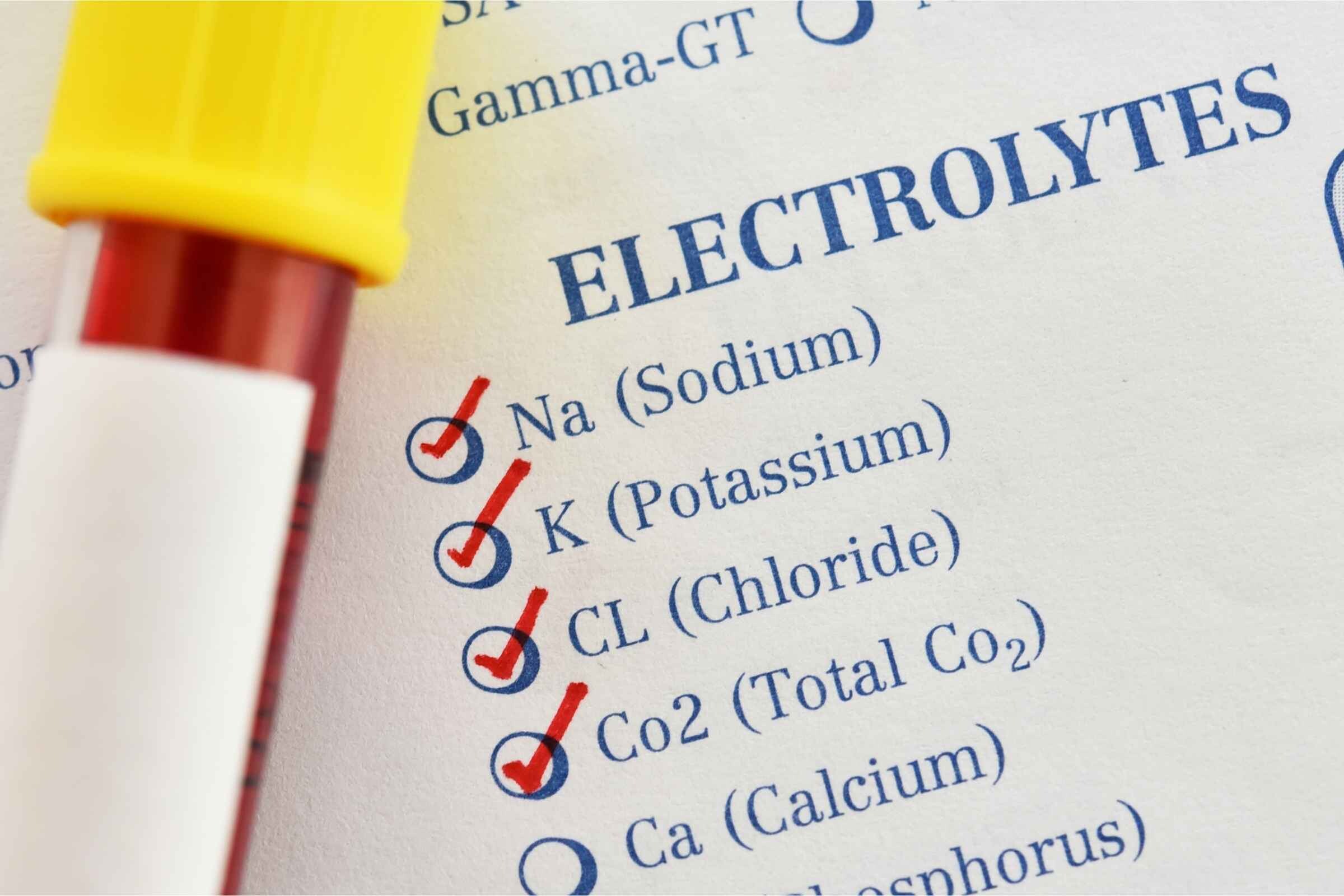 Elektrolyte – Die unsichtbaren Regisseure unseres KörpersElektrolyte steuern lebenswichtige Prozesse wie Muskelarbeit, Nervenfunktion und Flüssigkeitshaushalt. Erfahre, warum sie für Gesundheit und Leistung so entscheidend sind.
Elektrolyte – Die unsichtbaren Regisseure unseres KörpersElektrolyte steuern lebenswichtige Prozesse wie Muskelarbeit, Nervenfunktion und Flüssigkeitshaushalt. Erfahre, warum sie für Gesundheit und Leistung so entscheidend sind. -
 Zink reduziert nachweislich die Krankheitsdauer – Was sagt die Wissenschaft?Zink kann mehr als nur das Immunsystem stärken. Studien zeigen, dass es die Dauer von Erkältungen spürbar verkürzen kann.
Zink reduziert nachweislich die Krankheitsdauer – Was sagt die Wissenschaft?Zink kann mehr als nur das Immunsystem stärken. Studien zeigen, dass es die Dauer von Erkältungen spürbar verkürzen kann. -
 Milk thistle: effect on liver health and detoxificationHow does milk thistle really protect our liver? Find out how silymarin neutralizes free radicals, supports detoxification and what studies say about its effect on fatty liver, hepatitis & co. Find out more now!
Milk thistle: effect on liver health and detoxificationHow does milk thistle really protect our liver? Find out how silymarin neutralizes free radicals, supports detoxification and what studies say about its effect on fatty liver, hepatitis & co. Find out more now! -
 Menopause is not a disease: everything women (and men) should knowHalf of humanity is affected by the menopause. The PRO issue of Health Nerds is all about facts, myths and tips about the menopause.
Menopause is not a disease: everything women (and men) should knowHalf of humanity is affected by the menopause. The PRO issue of Health Nerds is all about facts, myths and tips about the menopause. -
 Allergien und Heuschnupfen – Häufigkeit, Ursachen, Behandlung und PräventionOb Gräser, Pollen oder Hausstaub – Allergien betreffen immer mehr Menschen. Erfahre, warum sie entstehen, welche Therapien helfen und wie Du mit gezielter Vorbeugung die Beschwerden bei Dir oder Deinem Kind langfristig lindern kannst.
Allergien und Heuschnupfen – Häufigkeit, Ursachen, Behandlung und PräventionOb Gräser, Pollen oder Hausstaub – Allergien betreffen immer mehr Menschen. Erfahre, warum sie entstehen, welche Therapien helfen und wie Du mit gezielter Vorbeugung die Beschwerden bei Dir oder Deinem Kind langfristig lindern kannst. -
 Alcohol - health elixir or underestimated risk?There is a persistent rumor that alcohol in moderation can be good for your health. There are even research studies that prove this. But are they true?
Alcohol - health elixir or underestimated risk?There is a persistent rumor that alcohol in moderation can be good for your health. There are even research studies that prove this. But are they true? -
 Elektrolyte – Die unsichtbaren Regisseure unseres KörpersElektrolyte steuern lebenswichtige Prozesse wie Muskelarbeit, Nervenfunktion und Flüssigkeitshaushalt. Erfahre, warum sie für Gesundheit und Leistung so entscheidend sind.
Elektrolyte – Die unsichtbaren Regisseure unseres KörpersElektrolyte steuern lebenswichtige Prozesse wie Muskelarbeit, Nervenfunktion und Flüssigkeitshaushalt. Erfahre, warum sie für Gesundheit und Leistung so entscheidend sind. -
 Zink reduziert nachweislich die Krankheitsdauer – Was sagt die Wissenschaft?Zink kann mehr als nur das Immunsystem stärken. Studien zeigen, dass es die Dauer von Erkältungen spürbar verkürzen kann.
Zink reduziert nachweislich die Krankheitsdauer – Was sagt die Wissenschaft?Zink kann mehr als nur das Immunsystem stärken. Studien zeigen, dass es die Dauer von Erkältungen spürbar verkürzen kann. -
 Milk thistle: effect on liver health and detoxificationHow does milk thistle really protect our liver? Find out how silymarin neutralizes free radicals, supports detoxification and what studies say about its effect on fatty liver, hepatitis & co. Find out more now!
Milk thistle: effect on liver health and detoxificationHow does milk thistle really protect our liver? Find out how silymarin neutralizes free radicals, supports detoxification and what studies say about its effect on fatty liver, hepatitis & co. Find out more now! -
 Menopause is not a disease: everything women (and men) should knowHalf of humanity is affected by the menopause. The PRO issue of Health Nerds is all about facts, myths and tips about the menopause.
Menopause is not a disease: everything women (and men) should knowHalf of humanity is affected by the menopause. The PRO issue of Health Nerds is all about facts, myths and tips about the menopause. -
 Allergien und Heuschnupfen – Häufigkeit, Ursachen, Behandlung und PräventionOb Gräser, Pollen oder Hausstaub – Allergien betreffen immer mehr Menschen. Erfahre, warum sie entstehen, welche Therapien helfen und wie Du mit gezielter Vorbeugung die Beschwerden bei Dir oder Deinem Kind langfristig lindern kannst.
Allergien und Heuschnupfen – Häufigkeit, Ursachen, Behandlung und PräventionOb Gräser, Pollen oder Hausstaub – Allergien betreffen immer mehr Menschen. Erfahre, warum sie entstehen, welche Therapien helfen und wie Du mit gezielter Vorbeugung die Beschwerden bei Dir oder Deinem Kind langfristig lindern kannst.
Empfohlene Produkte
Holistic support for bones, joints, muscles & skin
For your well-being – inside and outEssential Vitamin for Eyes, Skin, and Immune System
High-Dose Support for Cells & Immune DefenseFor your universal protection
As one of the most valuable proteins in the body, lactoferrin is a natural component of the immune system.For your iron balance
Specially formulated for your iron balance with plant-based curry leaf iron, Lactoferrin CLN®, and natural Vitamin C from rose hips.Holistic support for bones, joints, muscles & skin
For your well-being – inside and outEssential Vitamin for Eyes, Skin, and Immune System
High-Dose Support for Cells & Immune DefenseFor your universal protection
As one of the most valuable proteins in the body, lactoferrin is a natural component of the immune system.For your iron balance
Specially formulated for your iron balance with plant-based curry leaf iron, Lactoferrin CLN®, and natural Vitamin C from rose hips.Holistic support for bones, joints, muscles & skin
For your well-being – inside and outEssential Vitamin for Eyes, Skin, and Immune System
High-Dose Support for Cells & Immune DefenseFor your universal protection
As one of the most valuable proteins in the body, lactoferrin is a natural component of the immune system.For your iron balance
Specially formulated for your iron balance with plant-based curry leaf iron, Lactoferrin CLN®, and natural Vitamin C from rose hips.Holistic support for bones, joints, muscles & skin
For your well-being – inside and outEssential Vitamin for Eyes, Skin, and Immune System
High-Dose Support for Cells & Immune DefenseFor your universal protection
As one of the most valuable proteins in the body, lactoferrin is a natural component of the immune system.For your iron balance
Specially formulated for your iron balance with plant-based curry leaf iron, Lactoferrin CLN®, and natural Vitamin C from rose hips.
